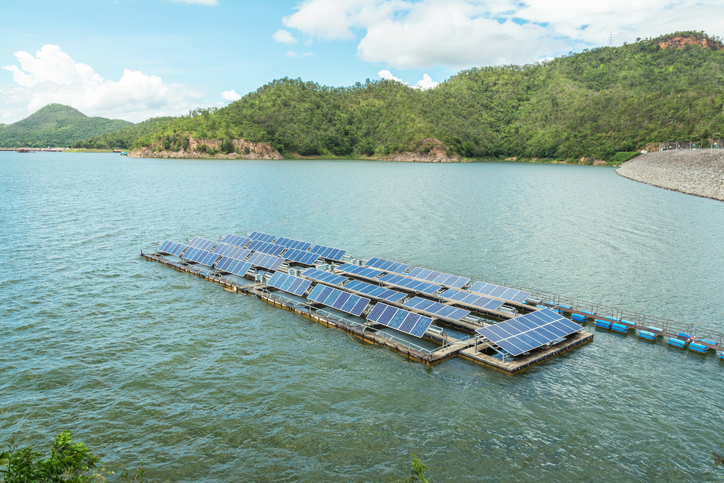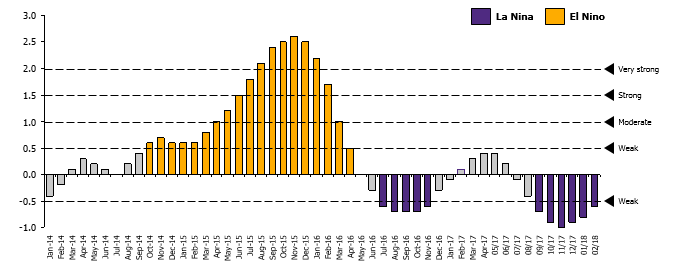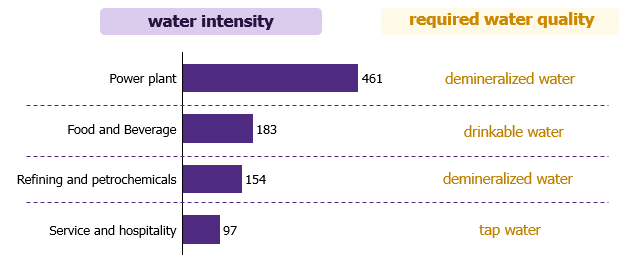Changing EEC strategy to manage water risks
The Expansion of EEC industries is also likely to drive water demand up in brief period because of the increase in production capacity. Consequently, the relevant agencies from both public and private sectors need to develop supporting projects to increase watershed capacity by over 350 million cubic metres of capacity over the next 10 years.
Author: Apinya Aksornkij

|
Highlight
|
Industrial development in the EEC zone will rapidly increase demands for water in Thailand’s eastern region in-line with the expansion of production capacity. The consequence of this development is that relevant public and private sectors will have to invest in various projects to add over 350 million cubic metres of watershed capacity over the next 10 years. This can be achieved through water management projects, such as increase the capacity or build a new water reservoir, improve the pump system that feeds water back into the reservoir, and finding a new source of water.
Although both public and private sectors have plans to support the increasing need for water in the EEC, the risk of water scarcity remains due to irregular rainfall depending on the climate in a particular year. This is especially applicable to the El Niño, which induced drought such as at the end of 2014 through to 2016 (Figure 1) and is likely to recur every 6 years.
In addition to the weather cycle, there are other factors that can also create water scarcity. According to World Resource Institute (WRI), it is suggested that the Bangpakong basin, part of the EEC zone, will face water stress in 2030 which resulting in limited access to desirable quantity and quality of water. The increasing demands for water that exceeds the available amount reflect the uncertainties related to natural disasters that could impact long-term business operation including costs, production continuity, and the relationship with the local community.
Although the risk of water scarcity remains low in the short-term, businesses should consider investing in improving water efficiency. Such an investment will help to reduce the potential impacts in the future. From a survey in 2017 by Carbon Disclosure Project (CDP), an organisation which supports companies to self-report their environmental impacts and risk management strategy towards sustainable economy, it was reported that businesses all over the world are becoming more aware that water scarcity, drought, and flood are the main factors that increase risks of having a higher water consumption cost. This is in addition to the risks of causing disruption to the supply chain and conflicts with the local community that lead to lawsuits. To mitigate these risks, 2,000 leading companies around the world are increasingly setting water consumption target in an effective and sustainable manner. To give an example, Dow Chemical has announced that the company will reduce water consumption during production and in the area facing water stress of at least 20% by 2025. This will be achieved using water treatment technology that allows water to be reused, as well as creating a partnership network that improves access and quality of water worldwide. It is worth noting that companies who replied CDP survey in 2017 have invested approximately THB 7.4 hundred billion on water projects both within and outside the facility with the aim of mitigating impacts from water risks.
Industries that consume a large quantity of water as their raw material should develop a plan for sustainable water consumption. For example, food and beverage industry need a large quantity of water that could lead to conflicts with the local community that shares the same resource. Therefore, companies should invest in projects that improve water efficiency and strengthen a relationship with the nearby community to share water resource in an effective and equal manner.
As an example, Coca-Cola factories in India used to conflict with surrounding communities in 2007 because the company extracted large quantities of water to use in their production process that affected the communities leading to protests and temporary plant shut down. Consequently, Coca-Cola had to develop a new strategy on water consumption with the goals of returning water used in the production process to its source, improve effectiveness of water efficiency the factories, better management of wastewater in the factories, and implement the water stewardship concept in which sustainable water consumption, both to the community and environment, is adopted as standard operating procedures in Coca-Cola factories worldwide. As a result, the company has returned 221 million cubic metres of water, equivalent to company’s water used in global sale volume, into nature and communities through clean water and sanitary campaigns.
Furthermore, industries that consume a large amount of water and are at risk from severe damage to production process due to water shortage should invest in technology to conserve water for emergency use. For example, electric power industry, petrochemicals, and refinery require water for cooling in the production process while needing water of higher quality, such as demineralised water, as well.
EIC views that investment in technologies that reduce water evaporation and produce freshwater will address the issue of water conservation for use in an emergency. Such a technology could be the floating solar farm which reduces water evaporation in a reservoir. As a bonus, the technology can also produce electricity that helps to reduce costs and recover the investment sooner. In addition, several businesses have already invested in freshwater production technologies. These include technology to produce freshwater from wastewater that has been treated to be reused or technology to desalinate seawater into freshwater. Nevertheless, each technology has its own drawbacks and cost implications. As an example, some types of wastewater may not be worth treating because they will require investing in advanced technology to receive water of good enough quality. Meanwhile, the production cost of desalinating seawater per unit is still around 3-3.5 times more expensive than water from the tap despite the technology becoming cheaper. Therefore, businesses will need to consider the possibility of encountering water emergency, the required water quality, and the costs of technology to evaluate the return on investment.
*Note – In the context of normal development according to water strategy stated in EEC progress report between March-May 2560 published on 29 May 2560
|
|
|
|
|
Figure 1: El Niño cycles between late 2014 to early 2016 that brought drought to Thailand
Unit: Celsius of the Oceanic Nino Index (ONI)

Note: ONI >0.5 = El Nino
ONI
Source: EIC analysis of data from National Oceanic and Atmospheric Administration (NOAA) and the Thai Meteorological Department
Figure 2: Electricity power industry, petrochemicals, and refinery are industries that use a large quantity of water and are at risk of severe disruption to the production process because of water scarcity. They also need water of higher quality
Unit: Cubic metre per THB 1,000,000 income

Source: EIC analysis of data from sustainable reports produced by Thai companies in 2017